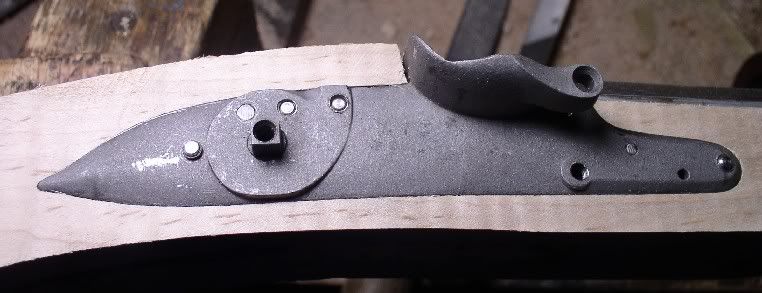Erzulis boat
45 Cal.
- Joined
- Jul 14, 2005
- Messages
- 566
- Reaction score
- 78

This was my first build, so I was "freewheeling" it. You will see that I inlet the lock to the outer bevel, and just continued all the way to the pan to expose the cock stop shelf. Is this correct? Or do I cut a clearance pocket only at the cock stop shoulder location and make the wood lockpanel follow the chamfer only until it ends, then run the wood flush with the top of the lockplate?
Small Siler flintlock-
Rust blued barrel (Herters Belgian Blue)-
California Claro Walnut (no stain!)-






